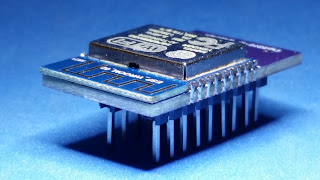UPDATE:
See Below
I have
watched and read several more articles regarding cryptography. Each suggest that any method that uses "reused keys" or "reused sheets" is doomed to be deciphered, especial with very fast computers available today. The Enigma Machine had a very large Key, one of 158,962,555,217,826,360,000 settings. Which is computed as:
5 * 4 * 3 * 26^3 * ( 26! / (6! * 10! * 2^10) ) = 158,962,555,217,826,360,000
Note: I did NOT verify the above expression :-)
It has been suggested that the use of the Enigma, which did
NOT use a "reused key", had its own downfalls. The most fatal where the facts that any single character would never encrypt to itself, and the "day key" was transmitted twice, or read from a code book. History may have been recorded very differently
without these two flaws.
The mechanics of the Enigma changed the running "key" with each character as the message is encoded, which is good. But, the starting "day key" was normally transmitted in a predictable formant twice at the beginning of each day.
I have played with
my software implementation of the Enigma Machine, and have recently realised that software does not have-to-have the "limitation" imposed on the original Enigma Hardware, which had only 26 letters, 3 or 4 mechanical wheels, and jumper wires to implement the cypher.
My software implementation "
could" easily use all of the ASCII codes (256, or maybe even more), as many "
wheels" as desired, and with coded jumpers (in wheels and plug-boards) that "could" encode to themselves.
I think, flaws could be removed, as the "published" problems with the Enigma. And, it is easy to do, it is just a mater of some easy to implement software! A very long "day key" could be created with
Diffie-Hellman key exchange that could be easily transmitted via the Internet. The Software Enigma could instantly encode and transmit a message the same way.
It was suggested that even with the knowledge of the internal working of the Enigma. it would have been a lot harder to break the code (if the flaws had been eliminated). The same is true with a software solution, the algorithm could be published without much fear.
I wonder: How long would it take to decipher text from my Greatly Expanded Software Enigma Implementation? With just 256 Letter Codes, 256 Wheels, and 1 plug-board?
The German Enigma Key would appear to be a VERY SMALL fraction of the size of the possible Keys with 256 Letter Codes and 256 Wheels.
Actually, I do not think that would/could ever be answered, the problem is just too big.
For now, Software algorithms are always fun to think about :-)
UPDATE:
Maybe "it", the number of keys for a 256 Letter Codes and 256 Wheels would NOT too big to calculate, I think it would be about:
256! * 256^256 =
27722102253833147750378752929772591901157254707422810843994850662178\
68509346387893431488607772479277687787895866917592862787498012527341\
20202941212930977432442839904764004089399268000448724122711559911607\
60779312819264238191417519113442331359269075602333340924686925409483\
99343102411050829848501735482622253522121728830342877764078525005364\
11706629786567706584325065474995318449040370842738828586810575264794\
12348783633571725165157131881436322357402582839932654806407271765546\
89263529741167130237617046563306987828896526138415818160291921177505\
94348668287596740843119974305008513344652339955774268612605659633484\
22635140831895266181475491155749645385538913890911142141920032414770\
49936109897934583258064087400757197847628192792690203621377980075882\
62413792355253854197130918506290943714329430352099968868502454316347\
64297297921292809713502427667689713905790084360261562757916556588568\
03869079651490956618284957160374601554692062042172725556744686295735\
57378616587083471686842123962257930714832014899651587649367849037445\
00798192771870940669313631808910069334016000000000000000000000000000\
000000000000000000000000000000000000
Or, about: 2.77221 x 10^1140 Keys
This number is not as big as a "
googolplex", but it is very large.
This was computed with the following on a Linux machine:
$ echo "`echo 256 | factorial` * `echo '256^256'`" | bc
-- Home Page:
https://WA0UWH.blogspot.com








